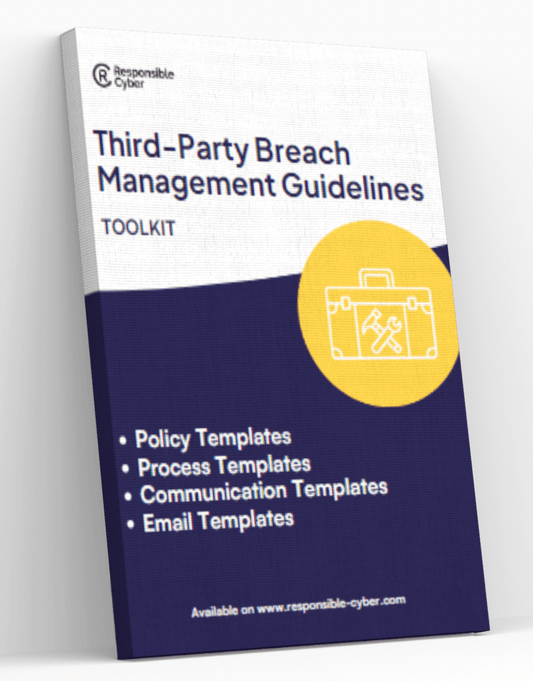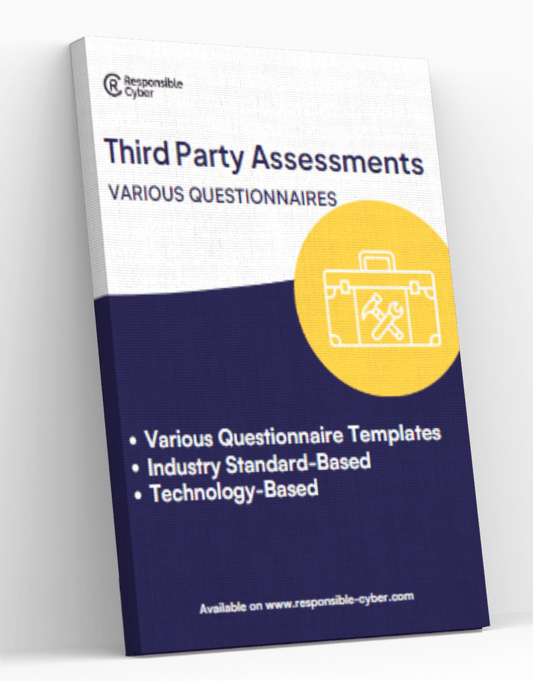Comprehensive Guide to Third-Party and Vendor Relationship Management Platforms

Organizations across various industries rely on robust platforms to manage these relationships effectively. This guide explores the leading third-party and vendor relationship management platforms, detailing their features, benefits, and integration capabilities.
The Importance of Third-Party Risk Management
Third-party risk management (TPRM) involves identifying, assessing, and mitigating risks associated with external vendors and suppliers. Effective TPRM ensures that these external entities do not compromise the organization’s operations, security, or compliance status. This process has become increasingly important due to growing regulatory requirements and the potential impact of supply chain disruptions.
Leading Third-Party and Vendor Relationship Management Platforms
Coupa
Best for: Supplier risk management
Features:
- Automated Multi-Level Invoice Validation: Ensures accuracy in financial transactions with suppliers.
- Dynamic Approval Workflows: Streamlines procurement processes.
- AI-Driven Sourcing Decisions: Optimizes procurement strategies using artificial intelligence.
- Integrations: Connects with over 40 tools including Microsoft Dynamics 365, SAP ERP, and Salesforce (The Ecomm Manager).
Coupa is well-regarded for its comprehensive approach to supplier risk management. By leveraging AI, Coupa helps organizations identify potential risks in their supply chain and make informed procurement decisions.
Gatekeeper
Best for: Contract lifecycle management
Features:
- AI Extract: Automates data extraction and clause analysis from contracts.
- Optical Character Recognition (OCR): Processes and indexes documents automatically.
- Integrations: Compatible with Adobe Sign, Google Drive, Microsoft Dynamics 365, and more (The Ecomm Manager).
Gatekeeper simplifies the contract management process, reducing administrative burdens and ensuring compliance through its AI-powered tools.
GEP Smart
Best for: Unified source-to-pay solutions
Features:
- End-to-End Supplier Relationship Management: Manages procurement processes from sourcing to payment.
- Comprehensive Analytics: Provides insights into spend, sourcing, and financial management.
- Integrations: Offers extensive integration capabilities with various enterprise systems (The Ecomm Manager).
GEP Smart provides a holistic solution for managing supplier relationships, helping businesses optimize their procurement strategies and improve financial performance.
ProcessUnity
Best for: Centralized risk and compliance management
Features:
- Automated Risk Management Processes: Enhances efficiency in risk assessments.
- Continuous Monitoring and Reporting: Keeps track of vendor compliance and risk status.
- Centralized Vendor Information: Consolidates vendor data for easy access and management (ITPro).
ProcessUnity’s cloud-based platform is ideal for organizations looking to centralize their risk management efforts and maintain continuous oversight of their vendor relationships.
Prevalent
Best for: Combined IT and non-IT risk evaluations
Features:
- Comprehensive Risk Assessments: Evaluates both IT and operational risks.
- Continuous Monitoring: Ensures ongoing compliance and risk mitigation.
- Holistic Risk Management: Provides a unified view of all third-party risks (Forrester).
Prevalent’s platform is designed to offer a broad perspective on third-party risks, combining IT and non-IT assessments to provide a complete risk profile.
RiskImmune
Best for: Holistic risk management
Features:
- Security, Compliance, and Operational Risk Assessments: Covers a wide range of risk factors.
- Continuous Monitoring and Real-Time Assessments: Keeps risk evaluations up-to-date.
- Integrated Risk Management Tools: Facilitates comprehensive risk mitigation strategies.
RiskImmune focuses on providing an all-encompassing risk management solution, ensuring organizations can continuously monitor and mitigate risks associated with their third-party relationships.
Aravo
Best for: Enterprise third-party risk management
Features:
- Workflow Automation: Streamlines risk assessment processes.
- Compliance Tracking: Monitors regulatory adherence.
- Integrations: Compatible with ERP and procurement systems.
Aravo’s platform is designed for large enterprises, offering robust tools to manage complex third-party ecosystems efficiently.
OneTrust
Best for: Privacy, security, and third-party risk management
Features:
- Data Privacy and Governance Tools: Ensures compliance with data protection regulations.
- Vendor Risk Management: Assesses and monitors third-party risks.
- Compliance Management: Tracks adherence to industry standards.
OneTrust is a versatile platform that not only manages third-party risks but also focuses on data privacy and security, making it suitable for organizations with stringent compliance requirements.
Venminder
Best for: Financial services and healthcare
Features:
- Vendor Risk Assessments and Questionnaires: Evaluates third-party risks systematically.
- Document Collection and Management: Organizes vendor documents efficiently.
- Performance Monitoring: Tracks vendor performance and compliance.
Venminder’s focus on financial services and healthcare makes it a specialized solution for industries with specific regulatory needs.
NAVEX Global
Best for: Compliance and risk management
Features:
- Third-Party Risk Assessments: Evaluates vendor risks comprehensively.
- Policy and Compliance Management: Ensures adherence to corporate policies.
- Incident Management: Tracks and resolves compliance incidents.
NAVEX Global offers a robust platform for managing compliance and risk, helping organizations maintain regulatory compliance and manage third-party relationships effectively.
SAP Ariba
Best for: Supply chain and procurement management
Features:
- Supplier Lifecycle and Performance Management: Manages supplier relationships from onboarding to performance evaluation.
- Procurement and Spend Analysis: Provides insights into procurement activities.
- Integrations: Seamlessly integrates with SAP ERP and other enterprise systems.
SAP Ariba is a comprehensive solution for managing procurement processes, providing tools to optimize supplier relationships and analyze spending.
IBM OpenPages
Best for: Integrated risk management
Features:
- Risk and Compliance Management: Consolidates risk data for informed decision-making.
- Third-Party Risk Assessments: Evaluates risks associated with external vendors.
- Advanced Analytics: Uses IBM Watson for deep insights into risk data.
IBM OpenPages leverages advanced analytics to provide a sophisticated risk management solution, integrating seamlessly with other IBM products for a comprehensive approach.
LogicGate
Best for: Customizable risk management workflows
Features:
- Risk Assessment and Mitigation Tools: Provides flexible risk management solutions.
- Workflow Automation: Streamlines risk management processes.
- Integrations: Connects with various enterprise systems for unified risk management.
LogicGate’s customizable workflows make it a versatile platform for organizations looking to tailor their risk management processes to specific needs.
SynerTrade
Best for: Procurement and supplier management
Features:
- Spend Analysis and Supplier Risk Management: Provides insights into procurement and supplier risks.
- Contract Management: Manages supplier contracts effectively.
- Performance Monitoring: Tracks supplier performance metrics.
SynerTrade offers a comprehensive suite of tools for managing procurement and supplier relationships, helping organizations optimize their procurement strategies.
Quantivate
Best for: Financial institutions and regulatory compliance
Features:
- Third-Party Risk Management: Assesses and monitors vendor risks.
- Business Continuity Planning: Prepares for potential disruptions.
- Compliance and Audit Management: Ensures regulatory compliance and tracks audit results.
Quantivate’s focus on financial institutions makes it a specialized solution for managing third-party risks and ensuring regulatory compliance.
MetricStream
Best for: Governance, risk, and compliance (GRC)
Features:
- Integrated Risk Management: Provides a unified view of all risk factors.
- Compliance Tracking: Ensures adherence to regulatory standards.
- Vendor Risk Assessments: Evaluates third-party risks comprehensively.
MetricStream’s platform is designed for organizations looking to integrate their governance, risk, and compliance efforts into a single solution.
Ivalua
Best for: Strategic sourcing and procurement
Features:
- Supplier Risk and Performance Management: Manages supplier risks and performance.
- Spend Analysis and Procurement Solutions: Provides insights into spending and procurement strategies.
- Integrations: Compatible with ERP and financial systems.
Ivalua’s strategic sourcing tools help organizations optimize their procurement processes and manage supplier relationships effectively.
Resolver
Best for: Risk and incident management
Features:
- Incident and Risk Management: Tracks and mitigates risks and incidents.
- Compliance Tracking: Ensures adherence to regulatory standards.
- Vendor Risk Assessments: Evaluates third-party risks systematically.
Resolver provides a comprehensive solution for managing risks and incidents, helping organizations maintain compliance and mitigate potential disruptions.
RSA Archer
Best for: Enterprise risk management
Features:
- Risk Assessments and Monitoring: Provides continuous risk evaluations.
- Compliance and Incident Management: Tracks compliance and manages incidents.
- Integrations: Connects with various enterprise systems for comprehensive risk management.
RSA Archer offers a robust platform for managing enterprise risks, integrating with existing systems to provide a unified view of risk factors.
Conclusion
The landscape of third-party and vendor relationship management platforms is diverse, with each platform offering unique features and benefits tailored to specific needs. By leveraging these tools, organizations can effectively manage third-party risks, ensure compliance, and optimize their procurement processes. Choosing the right platform depends on the organization's size, industry, and specific risk management requirements.
Frequently Asked Questions (FAQ)
1. What is third-party risk management?
Third-party risk management (TPRM) is the process of identifying, assessing, and mitigating risks associated with external vendors and suppliers to protect the organization's operations and ensure compliance.
2. Why is TPRM important?
TPRM is crucial for preventing supply chain disruptions, protecting sensitive data, ensuring regulatory compliance, and maintaining operational integrity.
Check out more related articles:







